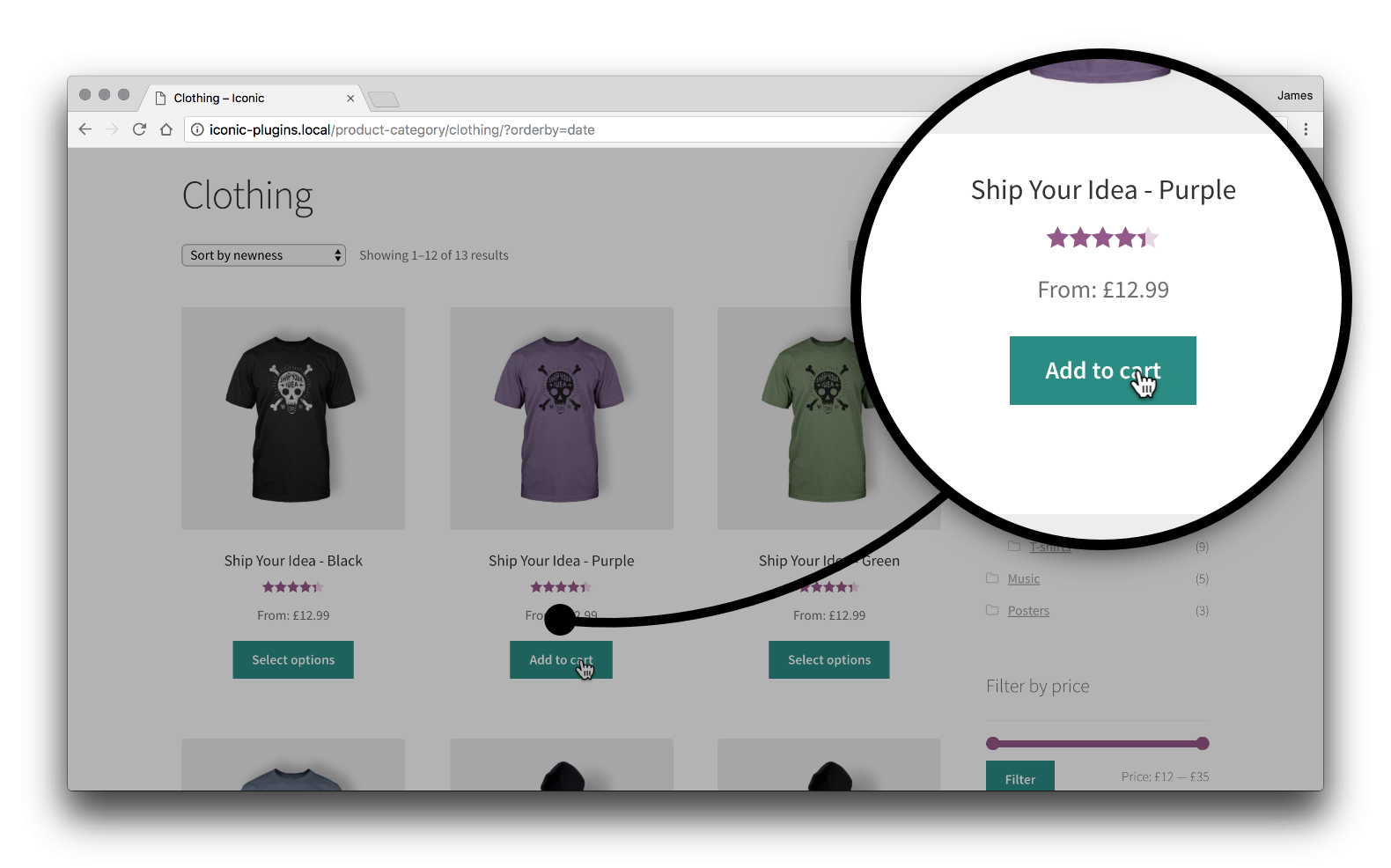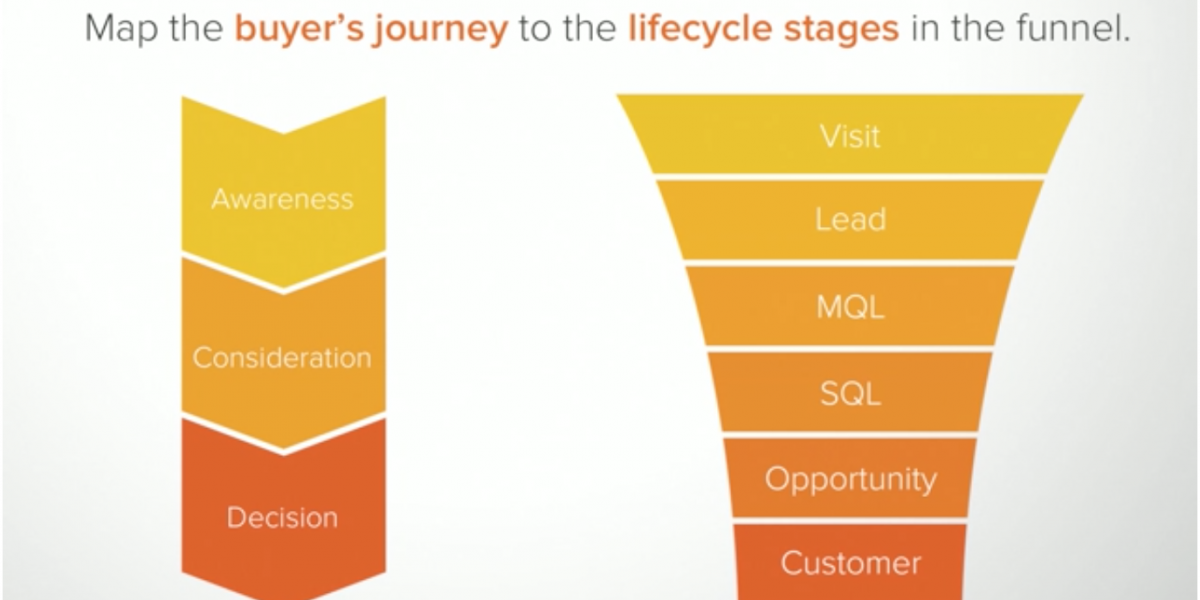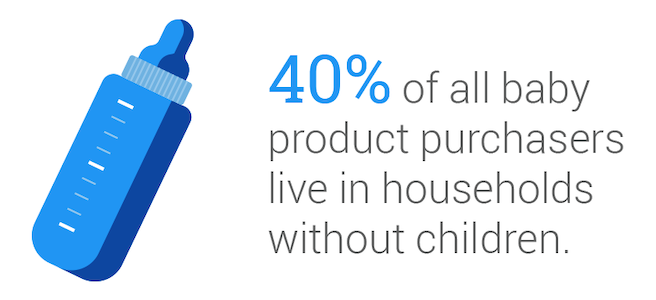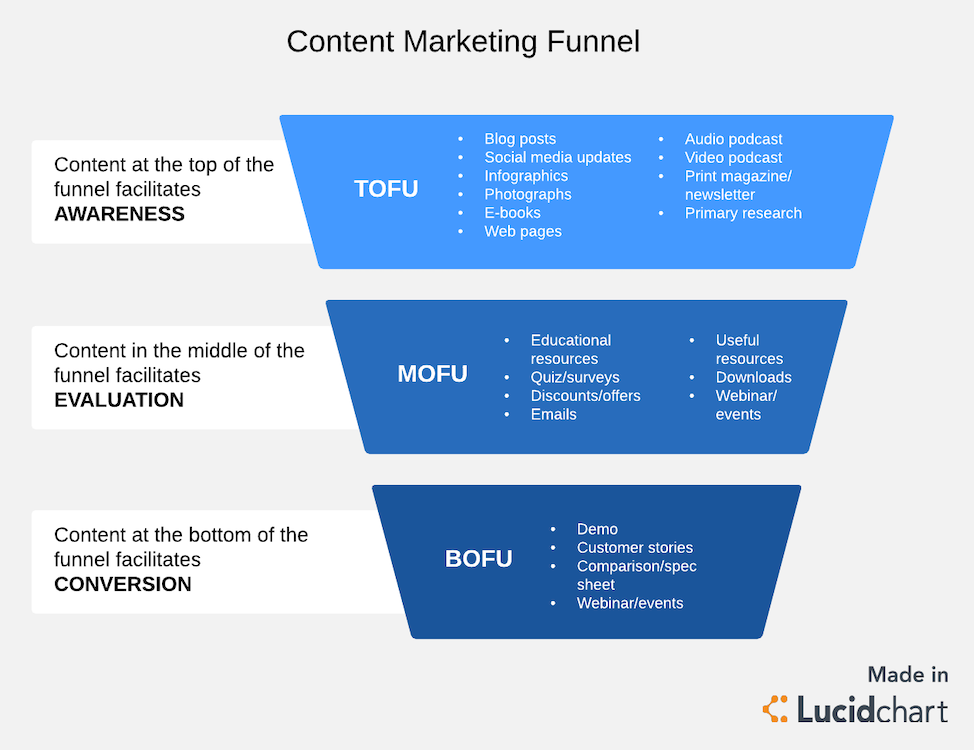- Purchase intent definition
- Purchase intent and the marketing funnel
- Awareness
- Consideration
- Decision
- Purchase
- Loyalty
- Measuring intent observationally
- Account for all channels
- Audit your content
- Monitor even small user actions
- Track devices
- Identify key demographics
- Understand context within typical paths-to-purchase
- Ask your users
- Measuring intent with predictive analytics
- Start identifying your audience purchase intent
Every advertiser knows that campaign success hinges on knowing your audience well. Things like their age, gender, marital status, income level, are need-to-know for precise targeting.
But if you’re only using demographic information to identify your customers, research shows you could be missing out on 70% of mobile shoppers.
That’s because, while useful, demographic information doesn’t tell the whole story, nor even the most important part. To better target your customers, you have to understand purchase intent.
Purchase intent definition
Audience purchase intent refers to the mindset of your audience as it relates to purchasing. Based on what you know about them, how close are they to buying your project?
Purchase intent takes many things into account: demographics, content consumption, behavioral information — even channels and devices — to form a better picture of your audience in their path to purchase. This, in turn, allows you to target them with the content to move them to the next logical stage in your funnel, toward buying your product.
Purchase intent and the marketing funnel
Purchase intent and the marketing funnel are very closely related. At each stage, your prospects and leads will exhibit one of two kinds of intent, which you can use to determine how to target them next. Those are:
- Informational intent: Informational intent is classified by the pursuit of knowledge on behalf of the lead. When they exhibit informational intent, leads are educating themselves on the potential solutions to the problem your product alleviates.
- Transactional intent: Transactional intent involves acting in a way that indicates possible purchase. This, for example, might be viewing a pricing page, searching a highly specific keyword phrase, or adding a product to a cart. Of course, they will vary from business to business.

If prospects are exhibiting behaviors that don’t seem to be linked to purchase, like reading blog posts, for example, they’re likely in the early stages of the marketing funnel. If they’re clicking through landing pages, though, there’s likely transactional intent there. Stage by stage through the marketing funnel, here’s what you can use to connect with people based on their purchase intent:

Awareness
In the awareness stage, your prospect has become aware of a problem they need to solve, and aware of your brand as a possible solution to that problem. However, they’re still exploring many brands in your class of solution, and others across classes.
For example, a marketer facing challenges to post-click optimization may consider purchasing PCO software or hiring an independent consultant. In this stage, intent is largely informational.
Consideration
In this stage, your prospect progresses from knowing their problem to knowing how they want to solve it. In this stage, intent is still informational.
Prospects and leads are trying to gather more information about possible solutions. At this point, though, they’ve narrowed it down to a particular class. To continue our example above, let’s say they’ve decided on software.
Decision
Around the middle to the bottom of the funnel is where marketing qualified leads become sales qualified leads. To make it to this point, leads have exhibited at least a few strong indicators of transactional intent.
For example, that might be requesting a demo, viewing a webinar, or chatting with a salesperson. These indicators will vary from business to business, but whatever they are, they will constitute the passing of leads from marketing to sales for nurture. At the decision stage of the funnel, you and one or two competitors are the finalists for the lead’s business.
Purchase
At this stage in the funnel, a purchase has been made from your business by the lead. Transactional intent has been followed through with, and they are now a customer.
Now, prodding for intent begins all over again. If you immediately serve your customer an email with a product related to the one they bought — to cross-sell or upsell — and they express some interest by reading reviews or adding it to their cart, this can show transactional intent.
Sometimes, right after a purchase is the best time to get a customer to buy again — when they’re wallet’s out and they’re in “buy” mode.
Other times, transactional intent re-establishes itself as informational intent, and the desire to learn the ins and outs of the product becomes the priority. New software buyers, for example, will likely find themselves knee-deep in informational tutorials to learn to use their new tool.
Loyalty
It’s easier and more profitable to maintain a customer than it is to earn a new one. Even if your customer buys that product you cross-sold them, or upsold them to, their intent is inevitably going to move back toward the informational.
Whether it’s helpdesk articles & tutorials, or customer service assistance, you should be providing your customers with all the information they need to reap the benefits of your product. More benefits mean a happier customer who’s more likely to buy an add-on, an upgrade, or another product you offer in the future.
Measuring audience purchase intent observationally
Attempting to measure purchase intent is highly complex. And, usually, when it comes to analyzing complex data interactions — connecting one to the other — marketers tend to misjudge. Often, it results in our valuing one or two indicators more than the others.
But, relying on one or two indicators to determine purchase intent is like relying on just one or two customers to tell you how to market to everyone else. You’ll get some of it right, but you’re going to get a lot wrong too.
Take demographics as an indicator of purchase intent. Once, they were considered the best way to narrow audience targeting to find the perfect buyer, but now we know they can be highly deceiving based on traditional assumptions. For example, let’s say you’re a brand that sells baby products.
Using demographic data, you might start backward from what you’d consider the ideal customer to create a highly targeted campaign. Criteria number one for such a customer would be: has at least one child.
But, Google researchers would disagree. According to their data, 40% of all baby product purchasers live in households without children:

That means if you were targeting ONLY people who had children, you’d be missing out on 40% of all baby product purchasers.
Alone, demographics can’t accurately determine purchase intent. No one parameter can. Below we’ve compiled some methods that, when combined, can help form a better picture of your audience and their purchase intent.
Account for all channels
A key indicator of where you should direct a prospect next is where they are now. Every interaction with your brand takes place somewhere: in-store, on your website, or social media, etc.
On which platform did they last interact with you? What are your most popular channels of interaction, and from which are the most purchases made?
Some channels are traditionally known for earning higher intent traffic, while others are known for reaching those just starting the buying process. For example:
- Search is known as a high-intent channel because of the level of action taken by a prospect. In this case, they’re actively seeking something out as opposed to scrolling through social when they click an ad, for example.
- Email can also indicate high purchase intent. While the level of intent does depend on the content they’re engaging with, remember, email subscribers are people who have already offered their email address to you. That means their purchase intent is already higher than the average visitor to your website.
- Pages of your website can indicate different levels of purchase intent, too. For example, someone who visits your pricing page is likely closer to purchase than someone on your home page, or blog, or features page.
Of course, with each of these, there are caveats: Searchers aren’t always looking for content correlated to high purchase intent, though search almost always has more intent than, say, paid social media. And email subscribers sometimes sign up to get gated content and never engage again. This is why it’s important to combine this information with the other indicators on this list, and then some.
Audit your content
One of the best indicators of purchase intent is the kind of content your visitors are consuming.

Different types of content are known to draw users at different areas of the buying process. For example, an article titled “How To Do My Small Business Taxes” shows the informational intent of someone who needs tax assistance. These people aren’t likely close to buying software, though.
Contrast that with someone who has requested a demo or read a customer story of your tax software, and you can see the difference in intent between the content types.
If they’re constantly downloading your ebooks and tip sheets, they’re likely just in it for the information. But if they show a clear interest in case studies and webinars, these are possible signals of transactional intent, and you can test how strong they are by trying to sign them up for a demo or a consultation.
Monitor even small user actions
In a broad sense, measuring purchase intent is all about determining user behavior. You can track content consumption, device usage, channel access, and more. But often, actions even smaller than that are indicative of purchase intent.
For example, you might find that a customer who reviews one of your products is twice as likely to buy again. This is something similar to what Instapage found when they completed a quantitative analysis of free trial users who later became customers.
Specifically, it was discovered that free trial users who published at least one page on a custom domain, then started A/B testing immediately, were 15X more likely to remain engaged over time and upgrade to a paid plan.
Once you know what these trigger points are for your customers, you can start building processes that leverage them.
Track devices
The types of devices visitors use are key to understanding their purchase intent.
Desktop, for example, is more likely to be used for browsing at home or work. That’s not to say mobile can’t be used for browsing — it often is. However, nobody is browsing on their laptop in the mall to look for places to eat. That’s a task reserved for mobile.
When you combine information like this with keywords being searched, and location data, you can determine how high your visitors purchase intent is. If we use the example of someone in a mall searching for a place to eat, we can determine they’re probably more likely to come to our restaurant in the mall than someone who is searching from 60 miles away on their desktop at home.
To boost purchase intent, we could offer the shopper nearby an in-store discount, while we offer the searcher from 60 miles away from a store locator, or the ability to reserve a table.
Identify key demographics
Demographics can’t tell the whole story, but none of these parameters can. If we reconsider the example of a brand that sells baby products, we see that while a major portion of baby product sales come from homes without a child, more sales come from house with a child. Therefore, the likelihood someone without a child will buy is lower than the likelihood someone with a child will buy.
In this case, demographics like marital status, family size, age, can be powerful indicators of purchase intent. It’s a mistake to think that they’re not helpful at all just because they’re older methods of targeting.
Understand context within typical paths-to-purchase
Every product is different. Therefore, every consumer will need something different before they’re comfortable buying that product.
Higher commitment products, like expensive courses or software, for example, will take longer to sell than a meal at a nearby restaurant.
If we imagine, again, someone is searching for food in the middle of a shopping center, nearby restaurants can capitalize on such a search with paid ads that target people within a certain radius. These ads can be coupled with a discount, like free dessert for in-person diners. Searchers outside that radius may see a discount on delivery.
Either way, the marketers at the restaurant know that if someone is searching for their restaurant, it’s likely because they’re looking for somewhere to eat soon and not months from now. A simple discount can make the difference in earning a new customer.
Now, if someone in that same location, with a similar device, searches for an expensive class of software, marketers of that software know that the likelihood of earning a purchase then and there is low. Unlike the hungry shopper, this person will take much longer to sell to.
So, marketers of this software are better off not going for the sale, but offering their prospect something to get them into the funnel.
Could they be ready to buy the software? It’s possible. But not as possible as a mobile user looking for places to eat. Of course, a strategy like this takes into account more than just product context, like the content of the user’s search and location, for example.
Ask your users
As always, the best way to figure out what your users want is to ask them. And the ways you can do it vary.
Exit pop-ups, surveys, chat modules, customer support queries — these are all ways to collect invaluable qualitative feedback. In this case, you do not have to uncover what’s important to your users through data analysis; they’re telling you outright.
Rather than asking your customers specifically about jargon related to purchasing intent, ask them easy-to-answer questions that reveal valuable answers about the preceding parameters.
This can be a great shortcut to finding out demographics, channel usage, content consumption habits of high-likelihood buyers. Although, they should always be double-checked against data. It’s not uncommon for people to answer one way and act another.
Measuring purchase intent with predictive analytics
Of course, while identifying the circumstances that lead to purchase can be highly valuable, it’s also important to understand that the process is highly imperfect.
Often, we become victims of our preconceptions of which data we believe to be an indicator of high purchase intent, then we build a case around it. In other words, we see what we want to see in the data.
Predictive analytics can help us beat that bias. By taking in and processing countless data points, predictive analytics tools can connect the dots to find the when, where, and how, that correlate with high purchase intent — to the point that actions can be assigned a dollar amount to determine exactly how valuable they are.
This was the approach taken by John Nunziante, Group Director for Client Services at agency Cardinal Path. In a blog post for Martech Today, he and writer David Booth describe the ambiguity that often clouds the value of digital metrics:
“It’s weekly report time, and you’re the manager of the digital channel. You’re becoming masterful in the art of interpreting and re-interpreting your data in a way that shines a positive light on the digital channels you’re using, leveraging all the metrics available to you.”
- Telesales: “50,000 people called, we sold $250,000.” Wonderful!
- Retail sales: “150,000 people came into the stores, and 25,000 made a purchase, for a total of $12.5 million. In fact — if you give me another $1 million, I can sell 25 percent more.” Fantastic, and you got it.
- Digital: “We delivered six million display impressions and our search impression share is 82 percent. We had 95,000 clicks, and 15,000 used the store locator and 8,000 began the checkout process.” Huh? What does that have to do with anything?
Compared to other channels, it’s easy to see where the confusion manifests surrounding digital. It was for this reason that Nunziante and his team needed a better way to uncover the value of their metrics.
So, they had some predictive analytics built and data analyzed, and at the conclusion, they found that the indicators they thought were most valuable for determining purchase intent weren’t so valuable. Clicking “store locator,” adding an item to the cart, and even beginning the checkout process weren’t nearly as highly correlated to purchase as you’d imagine.
Instead, the data and models showed that interactions with the “chat now” feature were very valuable, and engagement with “special offers” was most predictive of a purchase, online and offline. Of the process, Nunziante says:
And once you know which actions are the most valuable, the really impactful work can begin. For example, armed with this knowledge, we tested every aspect of the offers pages and navigation elements, optimizing against this goal that we know is worth a lot to us, and then easily quantifying just how much value was being created.
Start identifying your audience purchase intent
Identifying audience purchase intent requires tying together countless aspects of user behavior. And, as channels and devices and ecosystems increase, it’s only going to get more difficult.
The decision to use observational skills or predictive analytics depends on several factors like budget, business maturity, and even reach. A smaller, local business without various paths to purchase will find their resources better spent on growth through other avenues. A global company with touchpoints across countless channels and devices, on the other hand, may miss indicators of purchase intent using observations alone.
Want to learn more about how to optimize the marketing funnel, sign up for an Instapage Enterprise demo today.

See the Instapage Enterprise Plan in Action.
Demo includes AdMap™, Personalization, AMP,
Global Blocks, heatmaps & more.
